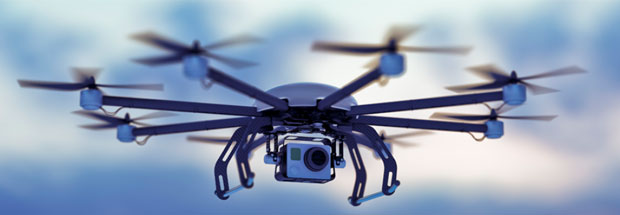TheLinux Foundation this week announced an expansion of theDronecode project with investments from new members and the creation of three technical working groups.
The foundation launched the open source project in 2014 in an effort to create a unified platform for commercial drone technology.
Twenty-seven companies have joined Dronecode since, bringing membership to 51, officials said.
Silver members include Aerotenna, AirMap, Airphrame, Altitude Angel, AutoModality, BirdsEyeView Aerobotics, CUAV, Droidika, Dig.y.Sol, DroneDeploy, DroneWorks., Emlid, EnRoute, Falcon Unmanned, Hex Technologies, Incite Focus, InspecTools, Matternet, ProfiCNC, Sentera, Skedans, Yin Yan Tech US and Zubax.
New sponsored members include Humanitarian UAV network, OpenTX Project, Stanford University Aerospace Design Lab and UAVCAN.
The foundation formed three new technical working groups to focus on areas of development the community views as critical to advancing the project’s mission, according to Chris Anderson, CEO of3D Robotics and chairman of Dronecode’s board of directors.
“We have seen our membership grow nearly threefold. Further, to see a member like Qualcomm increasing their previous level of commitment to our highest level of involvement is a testament to the technical work we are moving forward for commercial adoption of drones,” he told LinuxInsider.
Reading the Code
The Dronecode project serves as the basis for multiple commercially available drone technologies, including the recently announcedQualcomm Snapdragon Flight.
The platform is made up of multiple components, including the ArduPilot Mega unmanned aerial vehicle platform code contributed by 3DR. Dronecode includes many projects at various layers of the stack, ranging from a real-time operating system and drivers at the bottom to mobile and cloud apps at the top, according to Anderson.
The goal of the project is to create a common platform utilizing open source best practices and technologies to accelerate the adoption of better, more affordable and more reliable open source software for UAVs.
“Developing an open source platform for a specific technology is the quickest and surest way to speed up the development of that technology. The same is true for advancements in drone technology,” said Brent Hale, owner and operator ofRival Drones.
Open Source Key to Droning
Open source technology is critical to advancing UAVs through the development of a common platform. The modulator of the technology will allow adopters to mix and match projects up and down the stack as needed.
“Open source has proven its ability to speed the rate of innovation and time to market time and time again,” 3DR’s Anderson said.
Another factor hinging on open source involvement is affordable access. The more developers the project gets working on establishing a common platform for commercial drones, the faster the adoption of drones and UAVs in a commercial setting will occur, Hale told LinuxInsider.
Project Highlights
Three technical work groups announced this week will advance the technology. They focus on UAVs — camera and gimbal controls, airspace management, and hardware/software interfaces.
The MAVlink Camera Working Group’s mission is to assist camera manufacturers in implementing the MAVlink protocol in cameras. It also will help developers and manufacturers expand the Dronecode platform to support additional cameras and functions.
The Dronecode Airspace Working Group’s aim is studying the impact of proposed Federal Aviation Administration rules that would ban drone operations over large areas of U.S. airspace.
The Hardware Working Group’s purpose is formulating mechanical and electrical standards for interfaces to the autopilot and the peripherals. That will create a more formal interface between hardware and software development and unite efforts between Dronecode members and the open source developer community working to advance UAVs, the Linux Foundation said.
“I expect we will see more technical working groups form as the platform evolves,” said 3DR’s Anderson.
Around the Horizon
The biggest priority for this year is probably modularization, he said. Ultimately, success will hover around the creation of a single install file to make a Dronecode stack by enabling desired components with checkboxes.
“We are also amid an evolution from 32-bit processors to systems built on Linux (and even Android) that run powerful multicore 64-bit processors, such as the Qualcomm Snapdragon Flight board,” Anderson said.
Both the project and commercial drone use in general face numerous obstacles in establishing the necessary guidelines and technology to keep commercial drones from being a danger to the public, noted Rival Drones’ Hale.
“However, with more organizations getting on board with the Dronecode project, it’s clear that we are moving closer and closer to a platform that will ensure safety,” he said, “and that will lead to a wide range of uses for drones in a commercial setting.”






















































